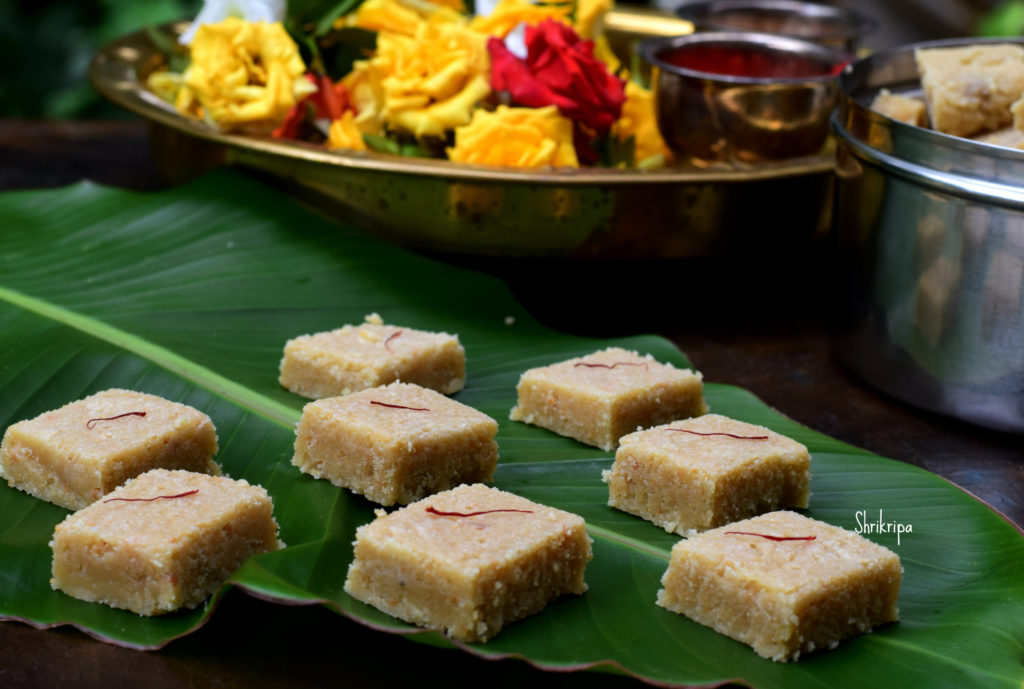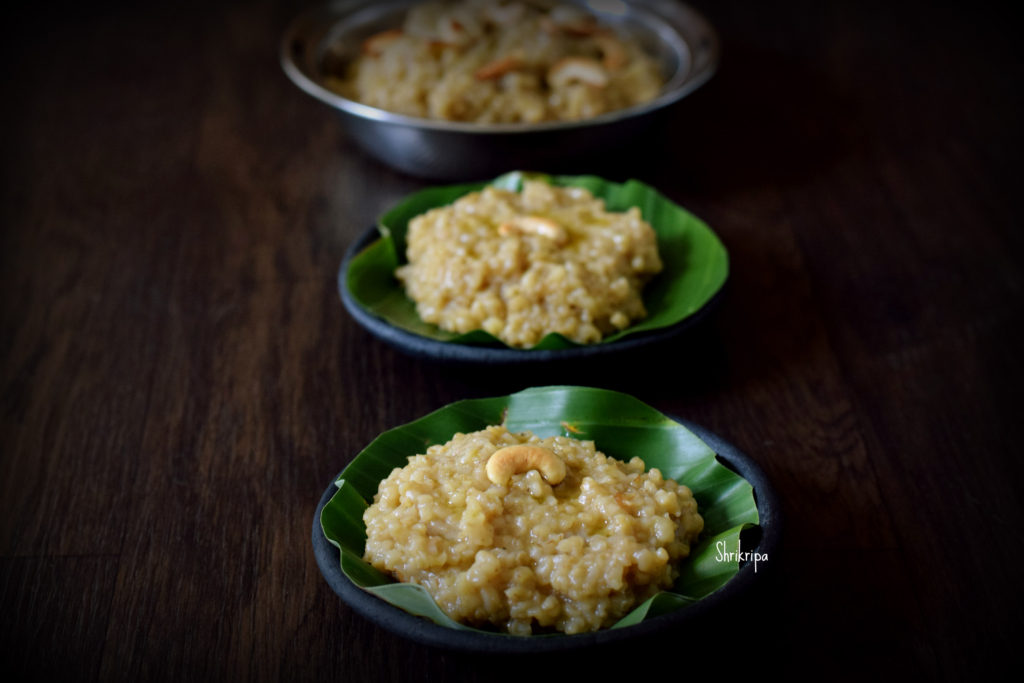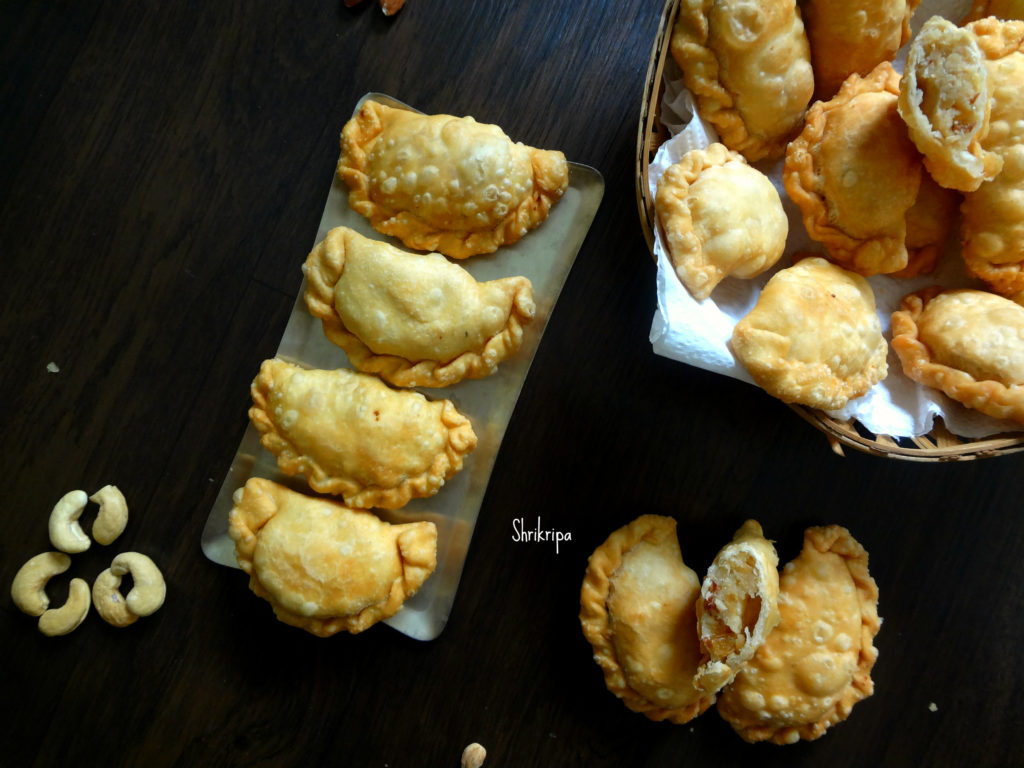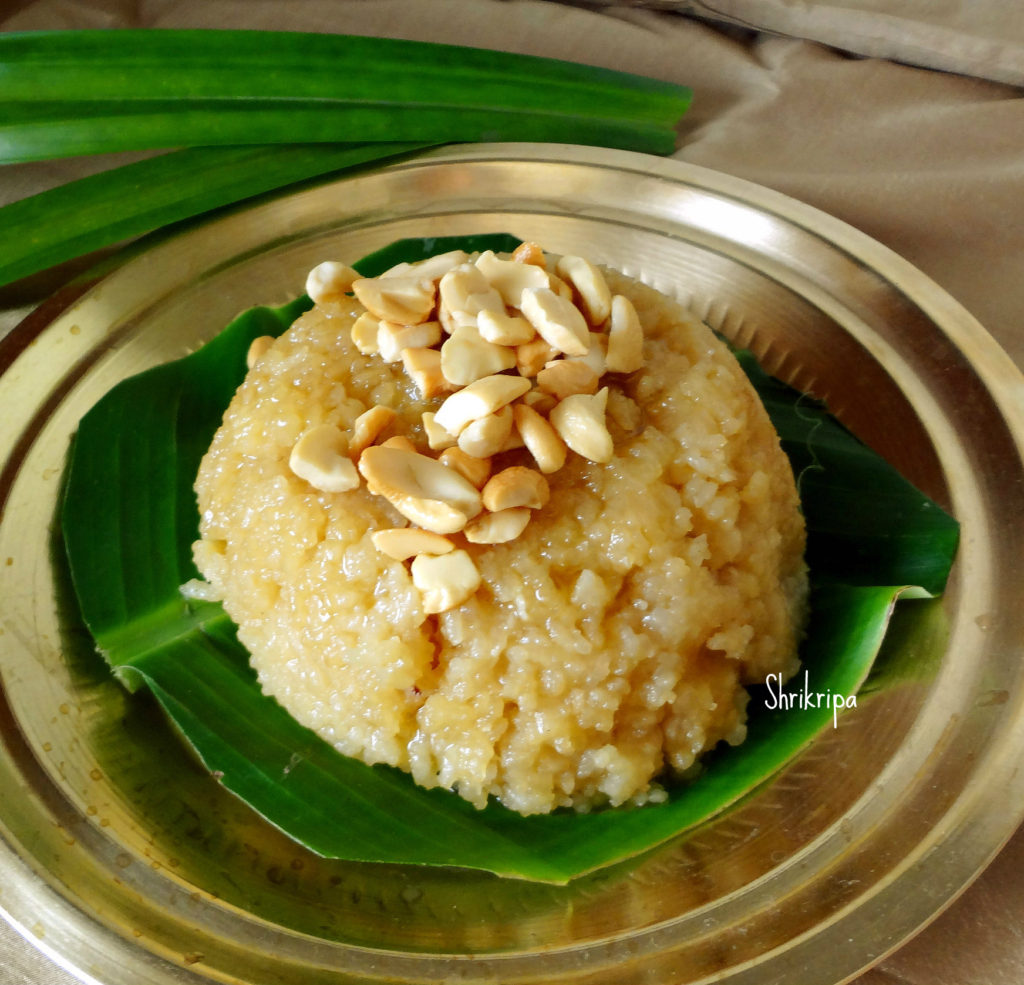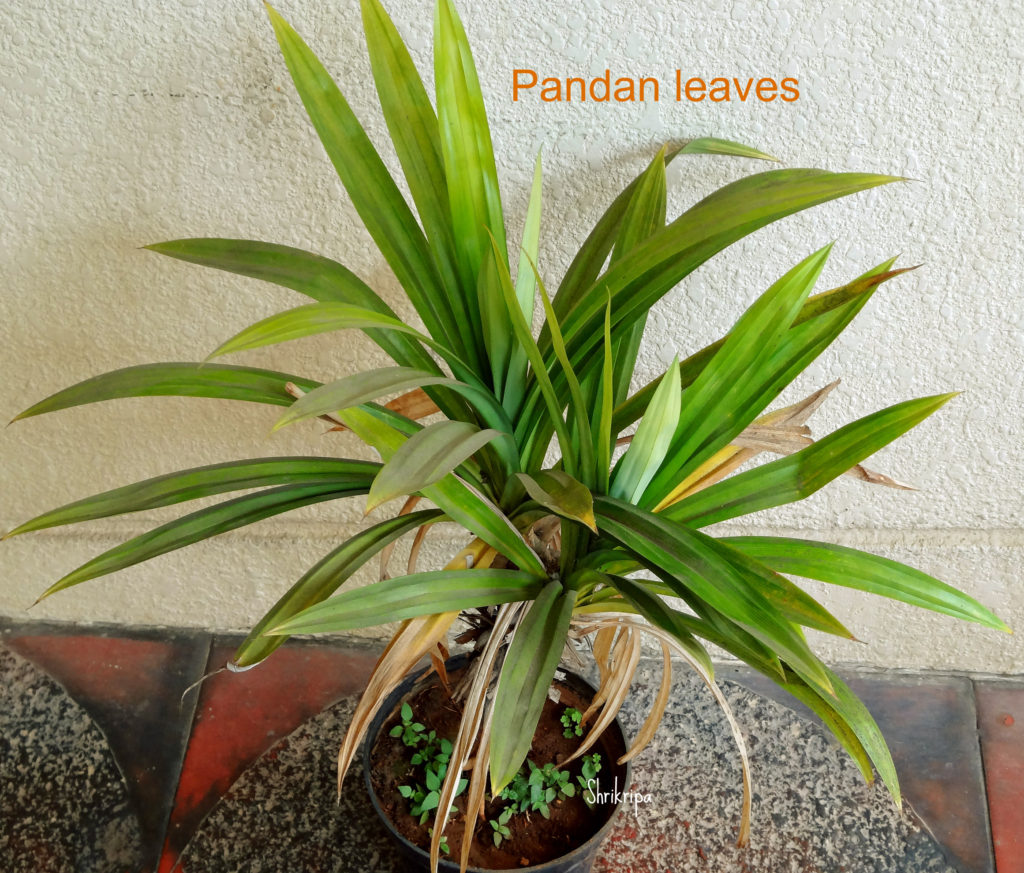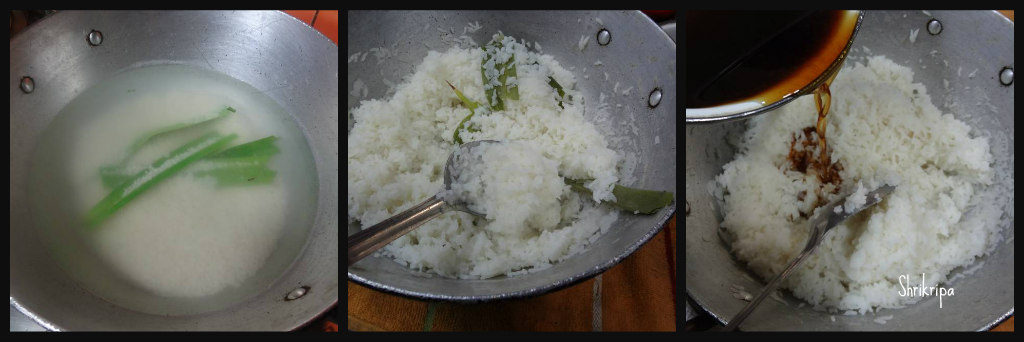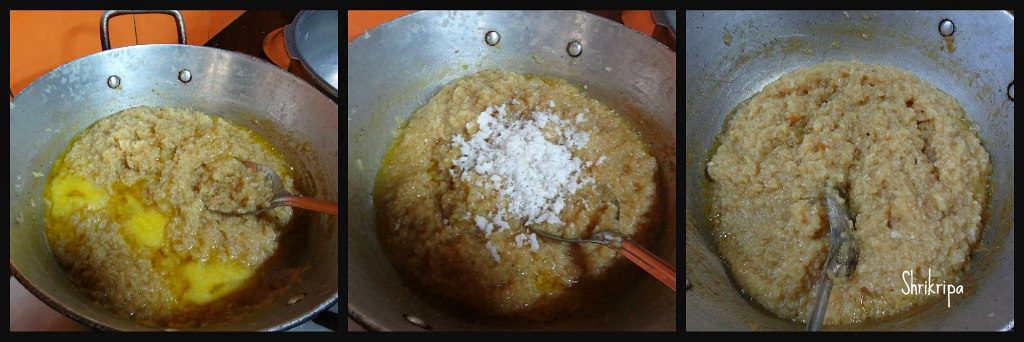Happy Deepavali wishes to dear readers.
Sajjige is semolina or Rava in our mangaluru, coastal region of Karnataka. Rava ladoo has never made an appearance in my blog. Hence, I made the ladoo for this Diwali and here I am, sharing a mouth-watering super soft laddu of our region. To make this ladoo, we need minimal ingredients and don’t need any milk or coconut, and it has a good shelf life when stored in an airtight container.
This laddu recipe is an age-old recipe I learned from my friend’s mom.
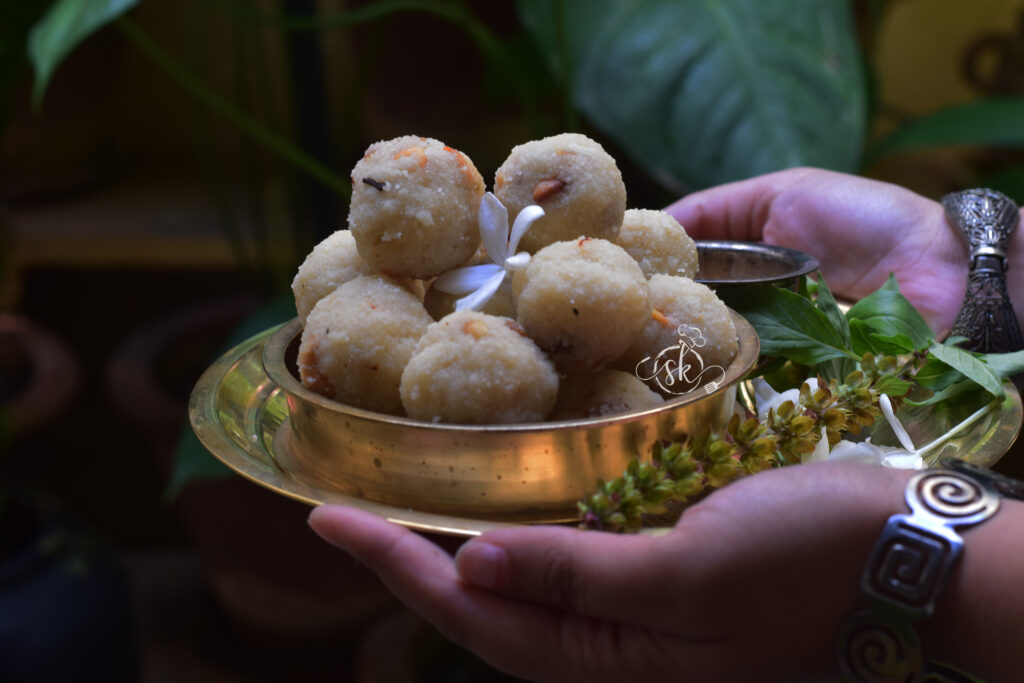
Method:
Medium Rava – 4 cups (also known as Uppittu rava/Bombay rava)
Ghee – 3 to 4 tablespoons
Cloves -4 (crushed)
Saffron strands – 8- 10
Cardamom – 1tsp
Cashew bits – 3 to 5 tablespoons (fried)
Raisins – 3 tablespoons (use as it is)
Sugar – 3 ½ cups
Water – 1 ¾ cup (just enough to cover the sugar)
Method:
-Take little ghee and fry cashew bits and keep it aside.

-Put Rava, saffron, and crushed cloves, and roast everything until it is grainy and white by adding ghee.
-In a saucepan or thick-bottomed pan, make a sugar syrup of half-thread consistency. Now, this is very important to get soft, melt-in-a-mouth laddu.

(To make sugar syrup, heat sugar and water until it boils and becomes shiny. To test the half-thread consistency, touch the sugar syrup between your forefinger and thumb, and when you open those fingers away, the sugar thread should break).
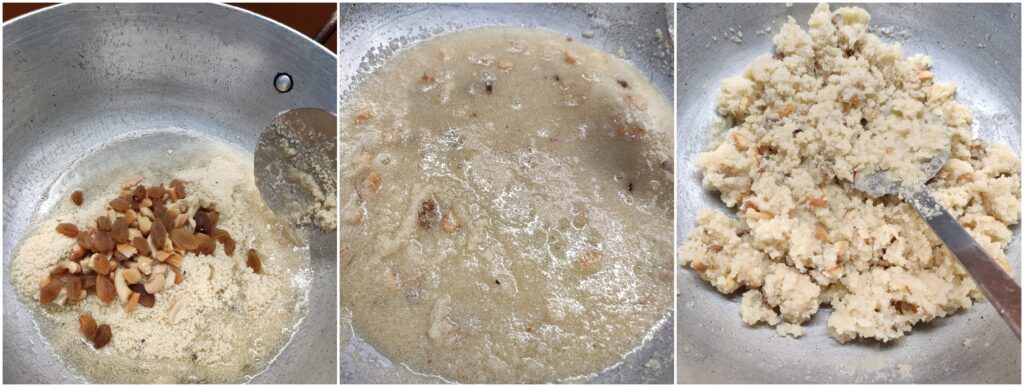
-Now, mix roasted rava, cardamom powder, roasted cashew, and raisins and mix everything properly. Mass would look watery, no worries. Close the lid and keep it aside for some time ( it takes 1 hour or more) until the mixture dries up.

-start binding the roundels and keep them aside to cool and dry properly. Store it in an airtight container and enjoy.

